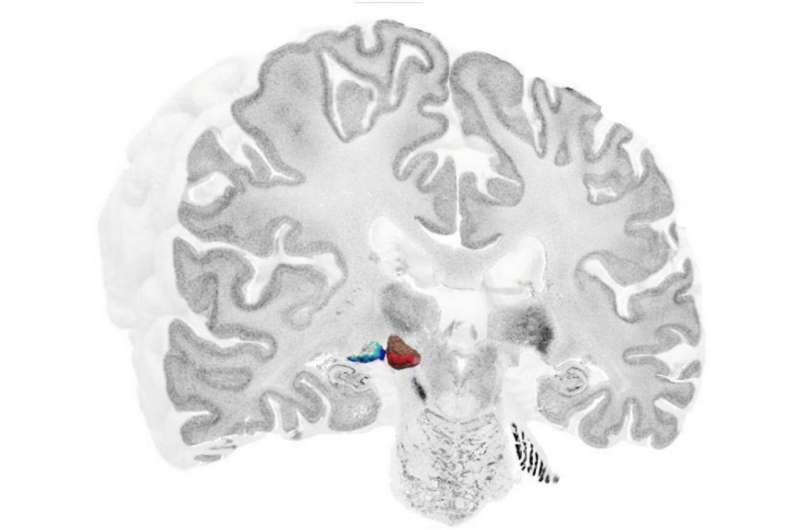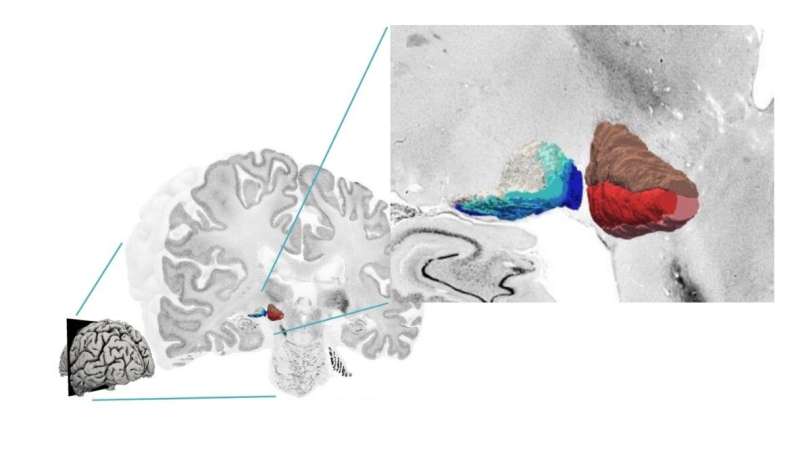Cellular structure of the human metathalamus revealed in novel 3D map

The human metathalamus is extremely important for relaying auditory and visual signals to the rest of the brain. However, a detailed, three-dimensional map of the cellular structure of the area was still missing. Using the BigBrain dataset, an integral part of the HBP, the researchers focused on the two distinct parts of the metathalamus: the medial geniculate body (MGB) with its subdivisions; and lateral geniculate body (LGB) with its six layers.
"The BigBrain dataset helps us to understand the structure of complex subcortical nuclei," explains Andrea Brandstetter of the Institute of Neuroscience and Medicine, Forschungszentrum Jülich, in a video by HBP partnering project HIBALL.
"Novel deep-learning-based approaches are used to learn about the topography and the cellular architecture of the metathalamus," says Kai Kiwitz of the Cécile and Oskar Vogt Institute of Brain Research, University Hospital Düsseldorf.
The new 3D maps are freely available online as part of the EBRAINS Atlas. "This way they can be used by the scientific community to bridge the microscale histology of BigBrain with functional measurements," explains Kiwitz. In addition to expanding our knowledge of the brain structure, the maps also have clinical relevance: many neurological disorders and dysfunctions involve the metathalamus, and highly detailed information regarding these structures could be used in conjunction with neuroimaging to better inform diagnosis and aid neurosurgery and deep brain stimulation.

The research was published in Frontiers in Neuroanatomy.
More information: Kai Kiwitz et al, Cytoarchitectonic Maps of the Human Metathalamus in 3D Space, Frontiers in Neuroanatomy (2022). DOI: 10.3389/fnana.2022.837485




















